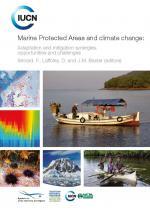Marine Protected Areas and climate change report
New IUCN report looks at how Marine Protected Areas can help combat climate change

Photo: © Matt McIntosh/NOAA
 Photo: IUCN
Photo: IUCN
With the welcome and increasing attention on ocean issues by the international climate change community, there is an opportunity to draw together knowledge, science and experiences to explain the role that Marine Protected Areas (MPAs) have in addressing climate change adaptation and mitigation actions.
A new report Marine Protected Areas and climate change: Adaptation and mitigation synergies, opportunities and challenges released today gathered inputs from leading scientists, and MPA and marine climate change experts. The purpose of the report is to provide information to demonstrate the importance of the role of MPAs in climate change adaptation and mitigation. Such recognition of the role of MPAs is also an important step towards increasing the effectiveness of MPAs under the CBD 2020 agenda.
The scope of the report is intended to cover all marine ecosystems from coastal to open and deep sea, but it is clear that there is much more information about the relationship between climate change and coastal ecosystems than for the open sea ones, and that most MPAs themselves are coastal. However, this inconsistency is being addressed by the trend to take into consideration open sea ecosystems in climate change interactions, in particular in mitigation (carbon sinks), alongside the increasing number of new designations of MPAs in the open ocean far from land.
Finally, the report tackles issues such as using MPAs as potential sentinel sites for early warning and ground-truthing of trends in marine climate change, as well as the role of MPAs as nature-based solutions for climate change.



